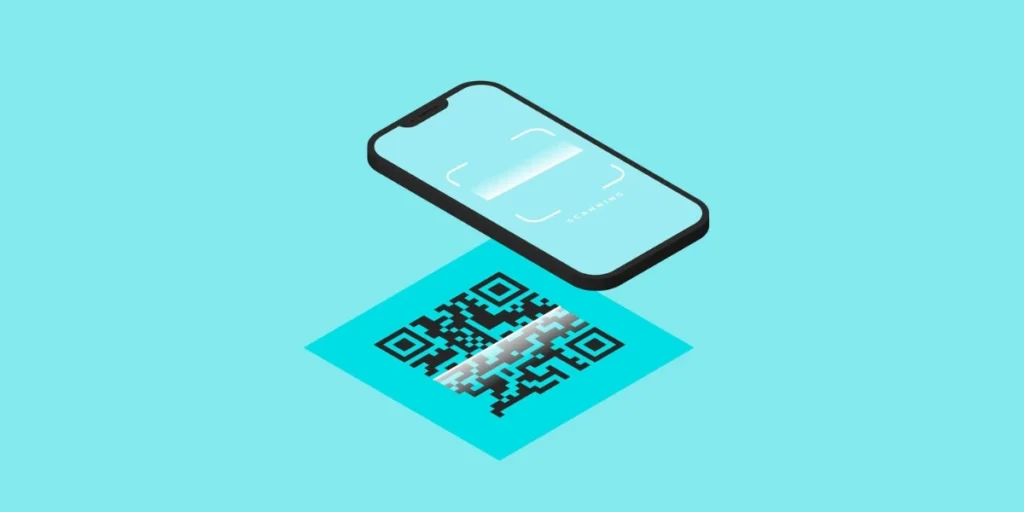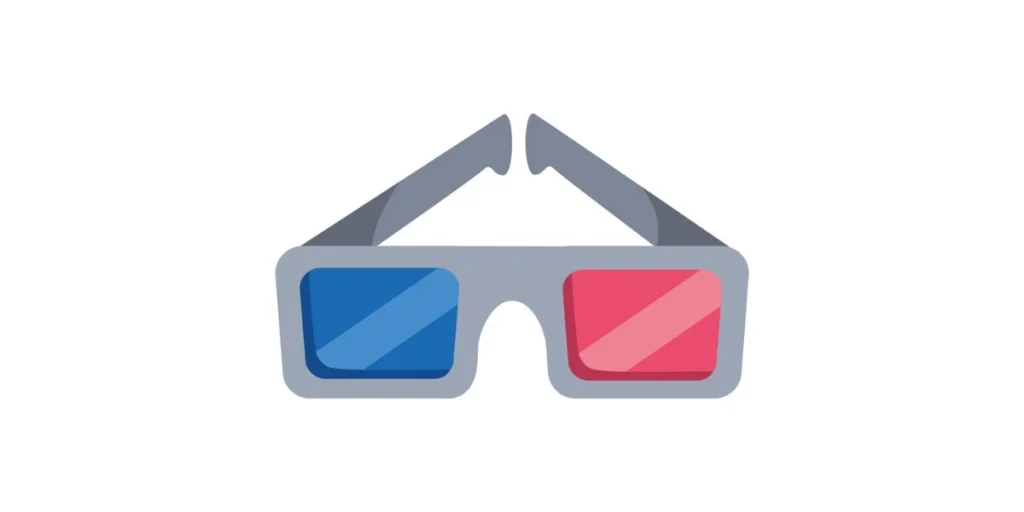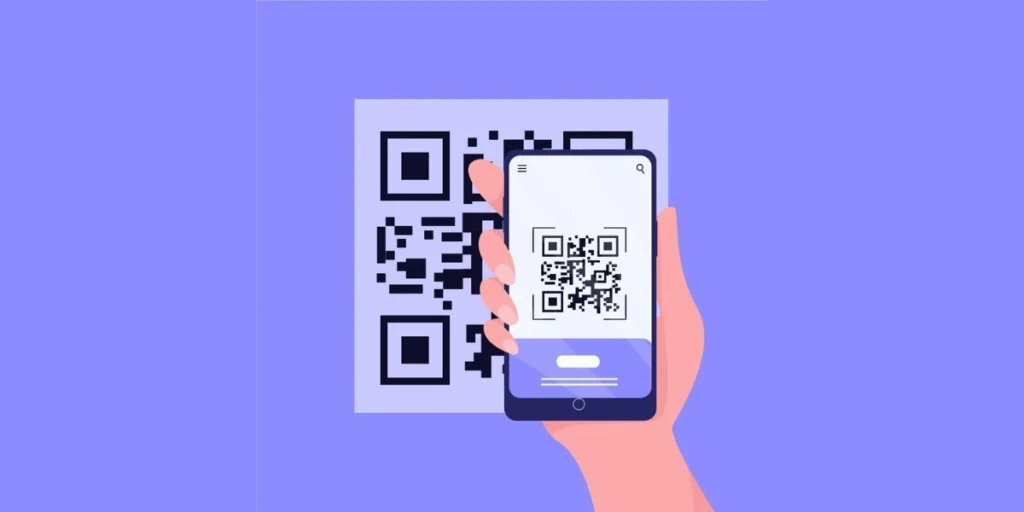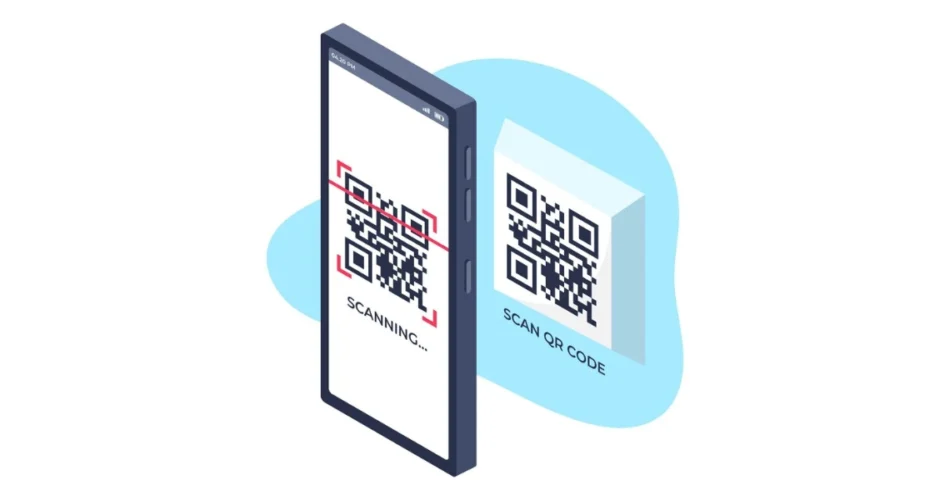Imagine a QR Code that stands out and isn’t merely found on flat surfaces. How companies interact with their clients is being revolutionized by 3D-printed QR Codes.
This technology elevates engagement to a new level by using a QR Code that you can touch, feel, and experience. Applications range from intelligent signs and product authentication to marketing and packaging.
This post will review the fundamentals of 3D-printed QR Codes, their advantages, and why they could be the next big thing in differentiating your business.
Are you prepared to make a technological leap that might transform how people see your company? Let’s begin.
A. Quick look into 3D print QR Code

3D printed QR Codes are created with 3D printing technology, allowing them to have distinctive dimensions, textures, and shapes.
Unlike typical QR Codes printed on paper or screens, these are genuine, actual codes you can interact with.
They have a raised surface that cellphones can still scan, and layering materials like metal or plastic construct them into the well-known QR Code design.
Why are they the center of attention? Brand experiences and product interactions are made even more versatile by 3D-printed QR Codes.
Because of their durability, they are perfect for settings like industrial machinery or outdoor signage where conventional printed codes could deteriorate.
Additionally, they are eye-catching and offer a feeling of originality and creativity, which can improve client interaction.
Whether it’s a personalized product tag, an original business card, or interactive signage, 3D-printed QR Codes give brands new ways to stand out and express themselves creatively.
B. Step one: Create a QR Code using Scanova

Using Scanova for a demo, here’s how to create a Website URL to QR Code online:
1. Go to Scanova. Click on Create QR Code
2. Select the Website URL category from amongst other QR Code categories.
3. Enter the link you want to encode in the QR Code. You can also go for Advanced Settings in the same step
4. Now, click Continue
5. On the page that loads, name the QR Code and click Create QR Code
6. Next, you’ll see the preview of the QR Code along with the Edit Design button
7. If you click on it, you’ll see two QR Code designs—a Custom Logo and a Custom Background Design. Custom logo design allows you to add a logo and color to your QR Code. On the other hand, a custom background design helps you place a QR Code on any image
Note that a customized QR Code helps make your creatives look branded. Hence, serious marketer prefer to design their QR Codes.
8. Once your QR Code is ready, you can preview it after you design it. If everything looks OK, proceed to download.
9. To download the QR Code, create an account. Here, Sign Up to get started with a 14-day free trial.
10. Once you Sign Up, click on the download icon. A pop-up will appear, prompting you to specify the size and format of the QR Code image (choose SVG for 3D printing purposes).
Once you enter the details, click Export
That’s it. Your website URL has now been converted to a QR Code. Simply test it once before you go ahead with 3D printing it.
C. Step two: How to 3D print a QR Code

The next step is to turn your QR Code into a 3D model before using a 3D printer to make it a reality. This allows you to print a tangible copy of your scannable QR Code with an original, interactive layout.
We recommend using Blender, a robust, open-source, and 3D program, to accomplish this.
Blender is a flexible tool for producing 3D-printed models, animations, visual effects, and even virtual reality experiences. It’s an excellent option for creating a 3D object from a 2D QR Code. Here’s how to do that:
1. Open Blender or any other 3D software
Import your QR Code as an SVG (Scalable Vector Graphic) file into Blender (or a comparable application). Your QR Code’s vector-based components are preserved in an SVG, facilitating manipulation and 3D conversion.
2. Import the SVG file
Choose the option to import the SVG file in Blender. You may start working with your 2D QR Code design once loaded into the 3D workspace.
3. Join the curves
There will be a variety of curves and lines in the QR Code design. These curves must be chosen and joined to form a cohesive design. Before converting the code to 3D, this is an essential step to ensure that every component is aligned appropriately.
4. Extrude the design
Once you have the unified QR Code, the next step is to give it depth. Use Blender’s extrude tool to pull the 2D design into the third dimension, creating a raised effect for each square of the QR Code.
5. Add a cube for the frame
Add a cube under the “Mesh” option to give the QR Code a polished appearance. This cube will surround your QR Code like a frame. To make the cube more aesthetically pleasing and manageable throughout the printing process, use Blender’s bevel modifier to soften its sharp edges.
6. Export the model
Once you have made the necessary changes to the shape and design, export the model in the stereolithography (STL) format. STL files are ideal for your next step because they are widely compatible with 3D printers.
7. Open in Cura
Open Cura, the slicing program used to get 3D models ready for printing and import your exported STL file. You may change the parameters in Cura, including the print speed, layer height, and other crucial elements.
8. Slice the model
To get the 3D model ready for printing, click the “Slice” option in Cura. The G-code, a language that instructs the 3D printer on constructing the object layer by layer, is created in this step.
9. Pause for layers
Identify the base layer of your 3D QR Code model. Decide at which layer you want the 3D printer to pause (this can be helpful if you want to add additional elements or features during the print). Add a “Pause at Height” script, specifying the layer number to pause the print process.
10. Prepare for printing
Save the G-code to an SD card after you’ve made the necessary adjustments, and it’s ready. Your 3D QR Code is prepared for printing as you insert the card into your 3D printer.
You may create a fully functional 3D-printed QR Code that mobile devices can scan by following these steps.
This procedure gives your project a creative touch while enabling you to produce a distinctive, physical version of your QR Code.
| Feature/Aspect | Blender | Cura | Unity |
| Features | 3D modeling, sculpting, texturing, animation, rendering, VFX, compositing, game development | 3D slicing for 3D printers, custom print settings, preview of prints | Game engine, 3D/2D development, VR/AR support, asset management, real-time rendering, multiplayer |
| Pros | Free, open-source, versatile, extensive plugin support, large community | Free, simple interface, supports many printers, customizable settings | Powerful for game and VR/AR development, cross-platform support, large asset store |
| Cons | Steep learning curve, performance heavy, complex for beginners | Limited to 3D printing, lacks advanced modeling tools | Requires higher hardware specs, steep learning curve for beginners, complex for non-gamers |
| Pricing | Free | Free (premium features for advanced users) | Free (with ads), Subscription-based (Plus and Pro versions) for additional features |
| Review | Highly praised for its capabilities but noted for its steep learning curve | Known for reliability in slicing, but some users wish for more advanced features | Widely regarded for its flexibility in game development but criticized for a complex UI |
| Ease of use | Difficult for beginners, requires time to master | Very user-friendly, simple interface for slicer setup | Moderately easy for developers but complex for beginners unfamiliar with game engines |
| Reliability | Stable with frequent updates, excellent for professional work | Reliable in slicing, consistent results with various printers | Very reliable for game development, especially for large projects; some issues with performance on low-end hardware |
| Future proof | Actively updated, open-source, constantly evolving | Actively updated with solid community support for 3D printing | Constantly evolving with industry trends, strong developer backing ensures future relevance |
The 3D Technology Market is expected to expand from USD 264.46 billion in 2024 to USD 761.35 billion by 2032, with a compound annual growth rate (CAGR) of 14.13% over the forecast period (2024 – 2032). In 2023, the market size for 3D technology was estimated at USD 227.4 billion. Source: marketresearchfuture
D. Why choose 3D printing for QR Codes

3D-printed QR Codes offer more than a high-tech look. They’re durable and flexible, enhancing brand engagement in ways traditional QR Codes can’t. Here’s why they’re getting popular:
1. Customizable for branding
3D-printed QR Codes can match your brand’s identity. Instead of plain black-and-white, you can design codes in your brand colors, shapes, or textures. Imagine a code shaped like your logo or a symbol for your brand. It stands out and makes an impact.
2. Useful across industries
3D QR Codes work in retail, manufacturing, art, and more. Retailers can use them as product tags; manufacturers put them on machines for easy access to data. Their flexibility lets them fit different needs.
3. Eco-friendly options
Many 3D printed codes can use sustainable materials like recycled or biodegradable plastic. For brands focused on being eco-friendly, this option shows commitment to the environment without losing durability.
4. Seamless product integration
3D QR Codes can blend into a product’s design. They don’t need to be added as stickers or labels. Instead, they can be part of the product, creating a clean, unified look.
5. Better security and authentication
3D-printed QR Codes help prevent fakes. They’re harder to copy, which is helpful for luxury goods or pharmaceuticals. Customers can verify products by scanning the code.
6. Higher engagement
A 3D QR Code offers a unique, hands-on experience. People are more likely to touch, feel, and scan something that looks different. This can boost engagement, especially in retail.
7. Scannable in different environments
Regular printed QR Codes can be complex to scan in bad lighting. 3D QR Codes, often made with contrast in mind, work better in varied light settings. This is great for outdoor events, low-light areas, or art displays.
8. Built for long-term use
3D-printed QR Codes are perfect for long-term projects. They’re tough, lasting for years in harsh conditions. They offer durability with minimal upkeep for outdoor structures, equipment, or public art.
When you 3D-print a QR Code, it makes brand interactions memorable, lasting, and versatile. They’re a smart choice for any business looking to stand out.
By 2027, the market for small industrial metal printers will reach $1 billion. Source: learnG2
E. Applications of 3D printed QR Codes

3D-printed QR Codes are not just cool to look at—they have real, practical uses across many industries. Here are some ways they’re being used:
1. Marketing and advertising
In marketing, 3D QR Codes help brands stand out. They grab attention and encourage people to scan for special deals, product info, or exclusive offers. Whether on business cards or billboards, they make a memorable impact.
2. Retail displays
To make their displays more interactive, retailers use 3D QR Codes. Shopping becomes more interesting when customers scan the codes to view product details, watch demos, or participate in promotions.
3. Event and exhibition stands
3D QR Codes provide quick access to event schedules, product details, or downloadable content at trade events and exhibits. They provide booths and exhibits with a distinctive look, long-lasting, and simple to scan.
4. Smart signage and wayfinding
In places like airports, museums, and hospitals, 3D QR Codes are part of intelligent signage. They help people navigate spaces, providing directions or extra details about exhibits and services.
5. Art installations and museums
Museums and artists use 3D QR Codes to enhance the interactive nature of art. Visitors can scan codes to experience augmented reality features, hear from the artist, or learn more about the artwork.
6. Construction and architecture
In construction, 3D QR Codes are used on building sites to link to blueprints, project updates, or essential specs. Workers can scan the codes to get quick access to documents or videos.
3D-printed QR Codes are versatile and rugged, making them a valuable tool for various industries. They offer new ways to engage customers and improve functionality.
What our customers say about us:
F. How to ensure 3D printed QR Code is scannable

1. Pick high-contrast colors
Use dark colors for the code and light colors for the background. This contrast is critical for scanners to detect the QR pattern. Avoid metallic finishes or glossy surfaces that cause reflections and mess up the scan.
2. Get the size and spacing right
QR Codes have precise sizes and spacing. Even small mistakes in the dimensions can make your code unreadable. Measure carefully and make sure the print stays true to the original design.
3. Keep the surface flat
A warped or uneven surface will mess with your scan. Ensure the printed QR Code is flat and smooth. Ensure the printer is calibrated and avoid warping using the correct settings.
4. Print big enough
The code needs to be large enough to scan. For minor uses, aim for at least 2 x 2 cm. If it’s for public display, go bigger, like 4 x 4 cm or more. Larger codes are more accessible for scanners to read.
5. Use high resolution
For sharp, clean details, use a higher resolution. A 0.2 mm layer height and a 0.4 mm nozzle will give you the sharpness you need.
6. Test in different conditions
Test the printed code in various light settings to ensure it scans well in all situations. Different phones and scanners have other cameras, so check it with a few devices before finalizing.
7. Pick durable materials
The material affects both the scan and the longevity of the code. Use materials like PLA for indoor prints or ABS/PETG for outdoor use. These will help keep your QR Code readable over time.
Choosing the suitable material is crucial for QR Code readability and longevity. PLA is ideal for indoor prints, offering smooth surfaces and stability in stable conditions.
ABS or PETG are better options for outdoor use as they withstand harsh weather, UV exposure, and temperature changes, ensuring the QR Code remains scannable over time.
Follow these steps, and your 3D-printed QR Code will be ready to scan without a hitch.
G. FAQs: 3D Print QR Code

1. Can any device scan a 3D-printed QR Code?
Absolutely. As long as the QR Code is printed with proper size, contrast, and clarity, most devices with a QR Code scanner can read it.
2. What’s the best material for printing QR Codes?
Because PLA prints quickly and captures small details well, it’s a good option for indoor use. Choose more resilient materials for outdoor applications that can withstand weather and wear, such as PETG or ABS.
3. How large should my 3D-printed QR Code be?
For minor uses, a 2 x 2 cm size is good. For larger applications, like signs or public displays, aim for at least 4 x 4 cm to make scanning easier from a distance.
You can calculate the ideal size for your QR Code based on its scanning distance. The ratio of scanning distance to QR Code size should ideally be 10:1.
4. Can a 3D-printed QR Code become unreadable over time?
Yes, exposure to sunlight, wear, or harsh conditions can affect readability. Choose durable materials and test your code regularly to ensure it remains scannable.
5. How can I ensure my 3D-printed QR Code is scannable?
Make sure it has strong contrast, is the correct size, has a flat surface, and is printed with high resolution. Testing different devices and lighting conditions is key to ensuring it works everywhere.
6. How do I test if my 3D-printed QR Code works?
Just use a QR Code reader or your smartphone to scan it. It’s a good idea to test with different devices and in varied lighting conditions to verify its scan reliability.
7. Do I need special software to create a 3D-printed QR Code?
Absolutely not. Your QR Code can be created online and then imported into design software, such as Fusion 360 or Tinkercad, to get it ready for printing.
8. Can I print a QR Code on a curved or uneven surface?
It’s best to avoid this. Curved or uneven surfaces can distort the code and make it unreadable. Keeping the surface flat will ensure optimal scan performance.
9. How do I ensure my 3D-printed QR Code has enough detail?
To capture the fine features of the QR Code, use a finer nozzle (around 0.4 mm), smaller layer heights (like 0.2 mm), and a higher print resolution.
10. What if my 3D-printed QR Code doesn’t scan?
Double-check the size, contrast, and resolution. If issues persist, try printing it larger or using a higher resolution to improve scan accuracy.
11. Can you 3D print a QR Code?
Yes, you can 3D print a QR Code. First create a QR using Scanova, and then use Blender to convert your QR Code into 3D.
Brands that trust Scanova:
Summing Up
3D printing QR Codes opens up a world of possibilities.
Whether using them for marketing, product packaging, or just to add something unique to your brand, 3D-printed QR Codes stand out.
With the tips we’ve covered, you can ensure your codes are scannable, durable, and practical.
So, if you’re ready to level up your QR Code game, fire up that 3D printer and start creating. The future of scanning is here—don’t miss out!


